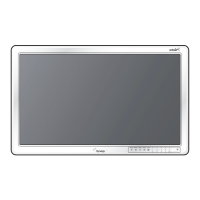What to do if the POWER indicator is flashing orange on my Arthrex Monitor?
- KkeithbuckleyAug 15, 2025
If the POWER indicator on your Arthrex monitor is flashing orange, count the number of flashes, then turn off the power. Contact the dealer from whom you purchased the monitor for further assistance.

